
Jan '07 - Jun '07
Our trip to Madrid in February with the Thom Mayne Research Studio concluded with each of us dispersing to major European cities to collect photos of what they described as urban conditions. Given the examples Thom gave, these were instances where multiple systems of the city interacted and were forced to negotiate an impending intersection. The book and website Made In Tokyo were given as a model. Unfortunately the old European capitals they chose for us provided less dramatic hybrids and collisions then you might find in an Asian city.
My first destination after Madrid was Amsterdam. By far, it was one of the most picturesque cities I've ever been to. There's not a lot of greenscape in the city but the canals provide a layer of open space that creates views, and energizes the boulevards. I was hoping to see some of the work of Aldo Van Eyck while there. I failed to make the trek out to the famous orphanage because I had heard its being converted in to an office building and the hundreds of playgrounds he designed for the city have for the most part disappeared. Anyway, I spent my three days around the old part, seeing the canals and the woven streetscape of bicycles, pedestrians, automobiles, and lightrail. Here's a few of my photos:
As expected, the studio came back with alot of tight alleyway shots.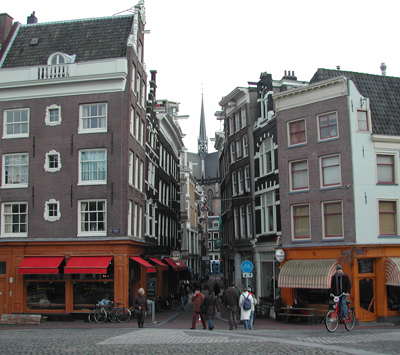
A parking garage for bicycles, only in Holland.
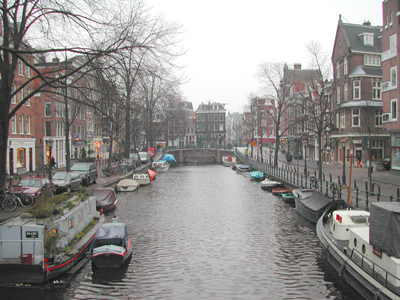
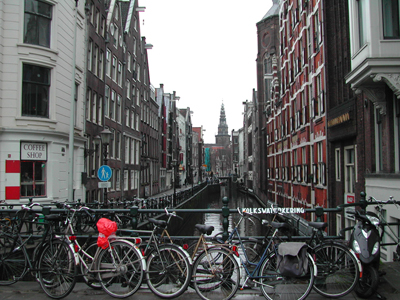
This is the floating flower market. They use to actually bring the flowers in this way, now its all by truck.
For some reason there were alot of chairs in the windows in this district.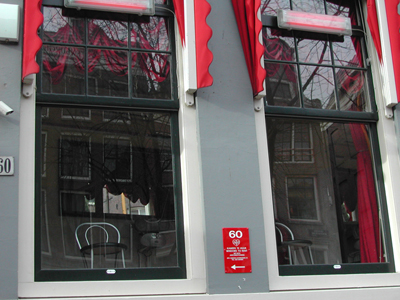
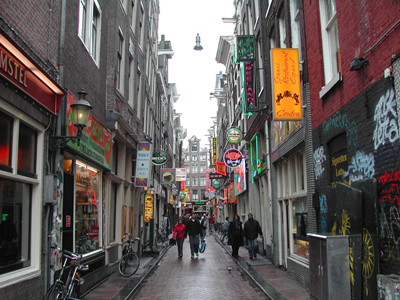
Europeans get so much more intimate with their public transit systems, its amazing no one is run over.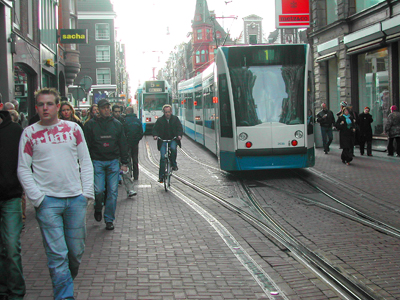
I think the only shot that got Thom's attentiont- this is an uplifted park edge condition that provides garage entry and retail space below. I like how the sidewalk continues up the edge and people were actually sitting up there.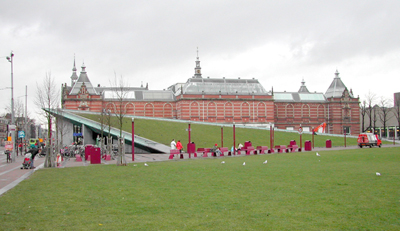
A street fixture you don't see here- an open air public urinal.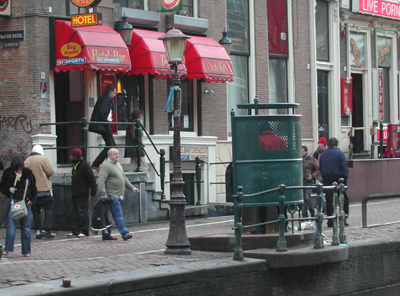
-Aaron T(A)DS
10 Comments
cool series.
funny mayne thinks made in tokyo is a good model. many of us here in tokyo find the approach a bit contrived, an example of seeing what they WANT to see rather than what is actually there. More to the point, it is a bit hard to understand the point of it. are such places important as models? if so, why? did mayne have anything to say on that point or was it taken as an a priori truth that they are intrinsically better?
to say that europeans get intimate with their public transport system is a bit unspecific
Were you kidding about the chairs in window? If not, note the red light affixed to the window frame. The prostitutes must have been on break.
Can't wait to get back to A'dam in a few weeks. It's been too long!
where's the hash bars?
Responses to your questions (in reverse order):
1. The hash bars are actually called Coffe Shops (coffee shops are called cafes) and are located primarily around the red light district. They're mostly for tourists and filled with alot of lonely looking dudes.
2. Yes, I was kidding. Although the red light district has some great older buildings and you wouldn't know it was the red light district if it weren't for the signage and window displays. The first canal photo above is one of the main streets in the red light district.
3. I was trying to sum up some thoughts a short photo caption. What I was trying to get at is the compactness of European streets, which is a quality that goes beyond just street width. Its contributed by the vehicles themselves- smaller cars and more bikes and scooters- as well as by a lack of clearly defined boundaries. In Amsterdam often there were no curbs and brickwork carpeted over streets and sidewalks alike.
4. Made In Tokyo. I'm probably simplifying the research of the studio too much. We also did a quarter of reviewing urban proposals and manifestos as well as case studies of large urban projects. As he works on larger and larger projects, Thom is relying on typologies and layering them up to create collision points which ideally spawn new hybridized typologies. Underlying our studio has always been a call for a more heterogeneous urbanism. We are trying to offer an alternative to New Urbanism that doesn't go down the road of monumentality and homogeneity proposed by modernists like CIAM.
i miss getting intimate in my european public transport systems.
however, i recommend not getting caught sans ticket, the fines aren't so fun.
oh, and who is thom mayne?
interesting idea. i can't recall seeing hybridisation happening in mayne's built work at a typological level, though definitely going on at the decorative one. don't know all his work though...is he trying to do something like tschumi used to? those instances also seemed very false to me, really not that different from the formal stance of new urbanism.
where i live in tokyo the monumental ciam-ish mixed use towers are lagely residential but with shops on the lower levels of the buildings which skirt the edges of the superblocks. they look seriously shite, but are inhabited in a marvelous way, almost like a bazaar in the middle east sense. These examples have almost convinced me that form has less to do with daily life than culture...but no architect seems willing to believe or condone that kind of attitude....it woul dput us out of work.
in that sense how is mayne different from new urbanism? that is beyond stylistic superficialities? am very curious cuz i am struggling with exactly the same issues in my work right now and damned if i have found a satisfying answer yet...
hybridisation is that word?
sounds like conjecture!
Block this user
Are you sure you want to block this user and hide all related comments throughout the site?
Archinect
This is your first comment on Archinect. Your comment will be visible once approved.